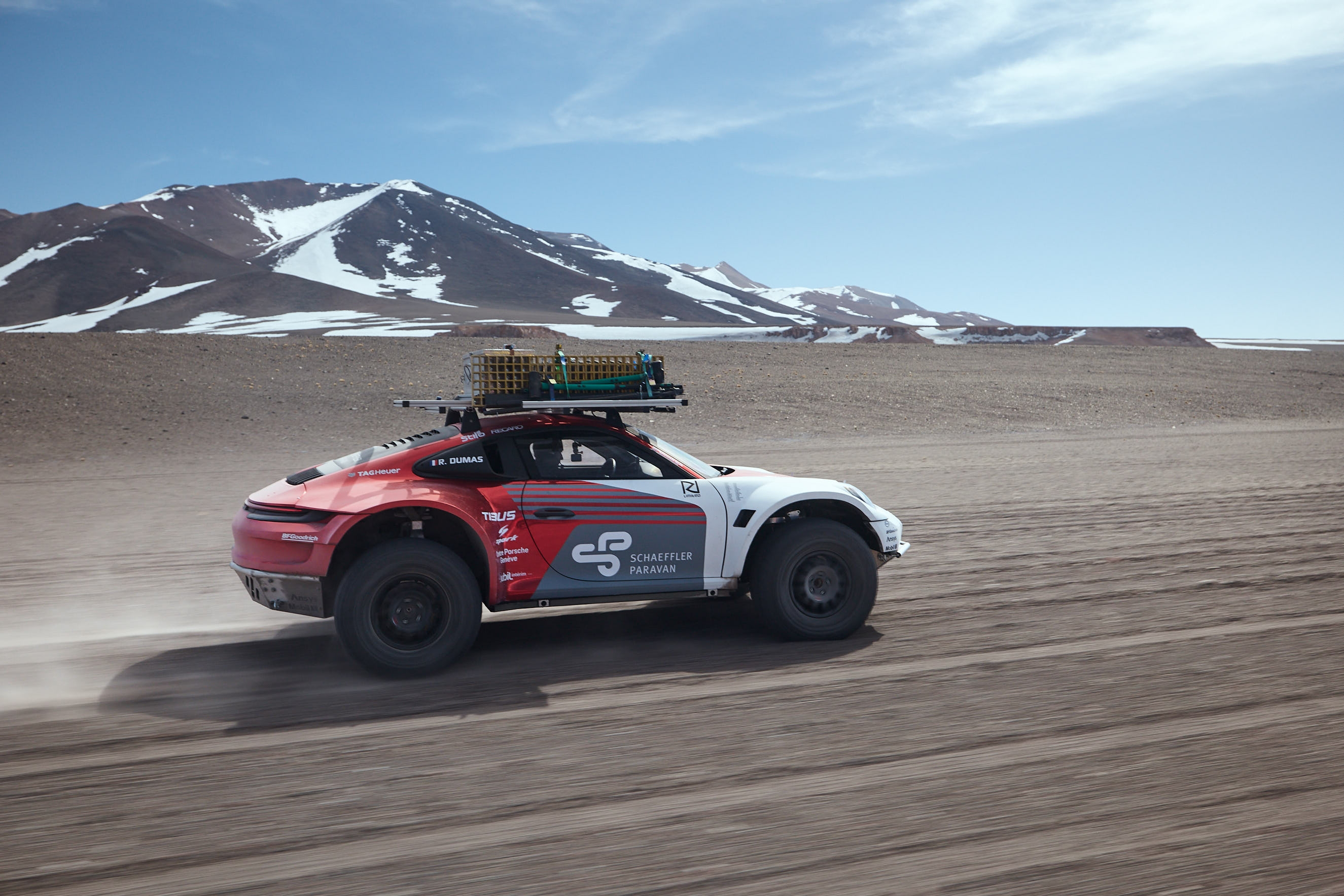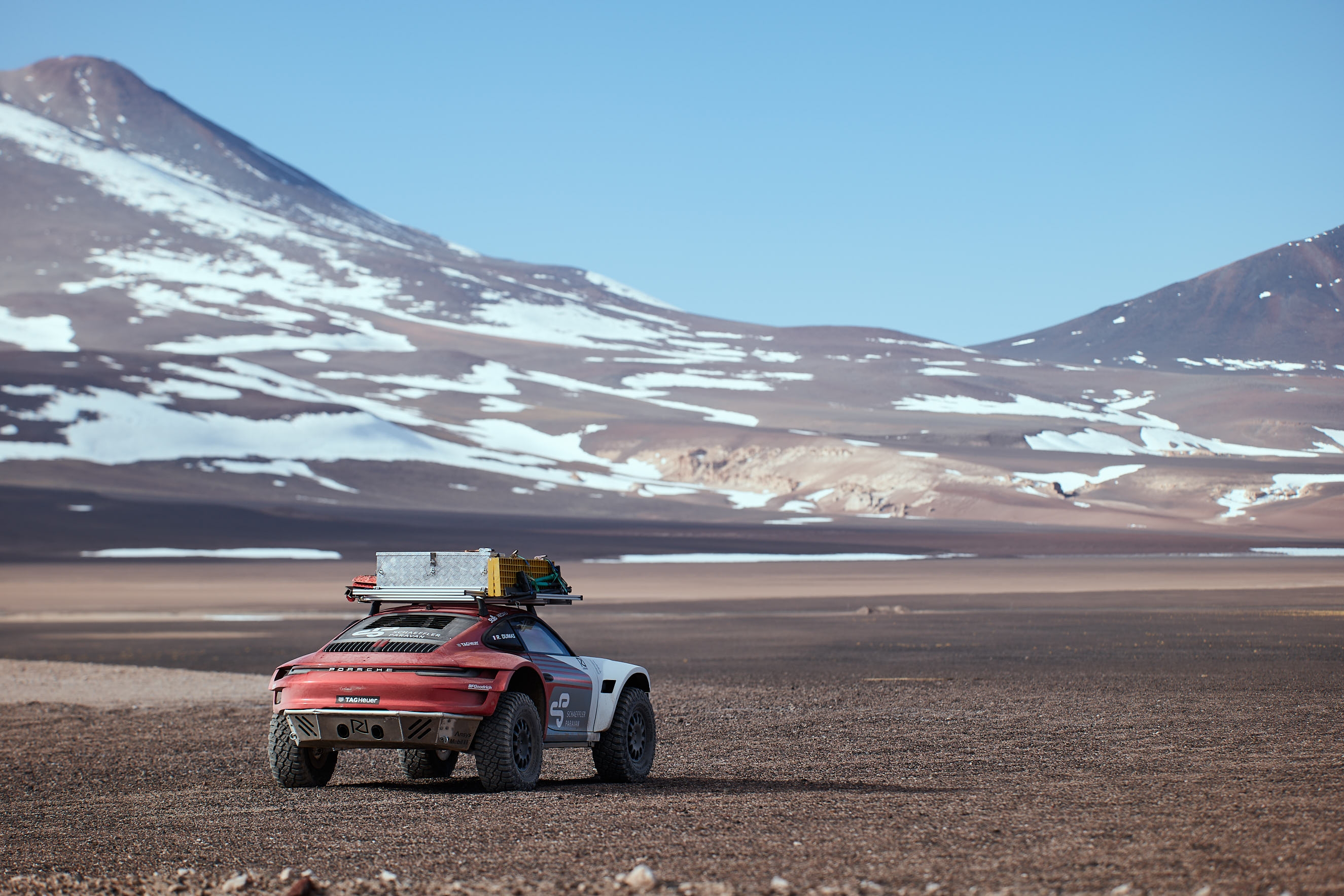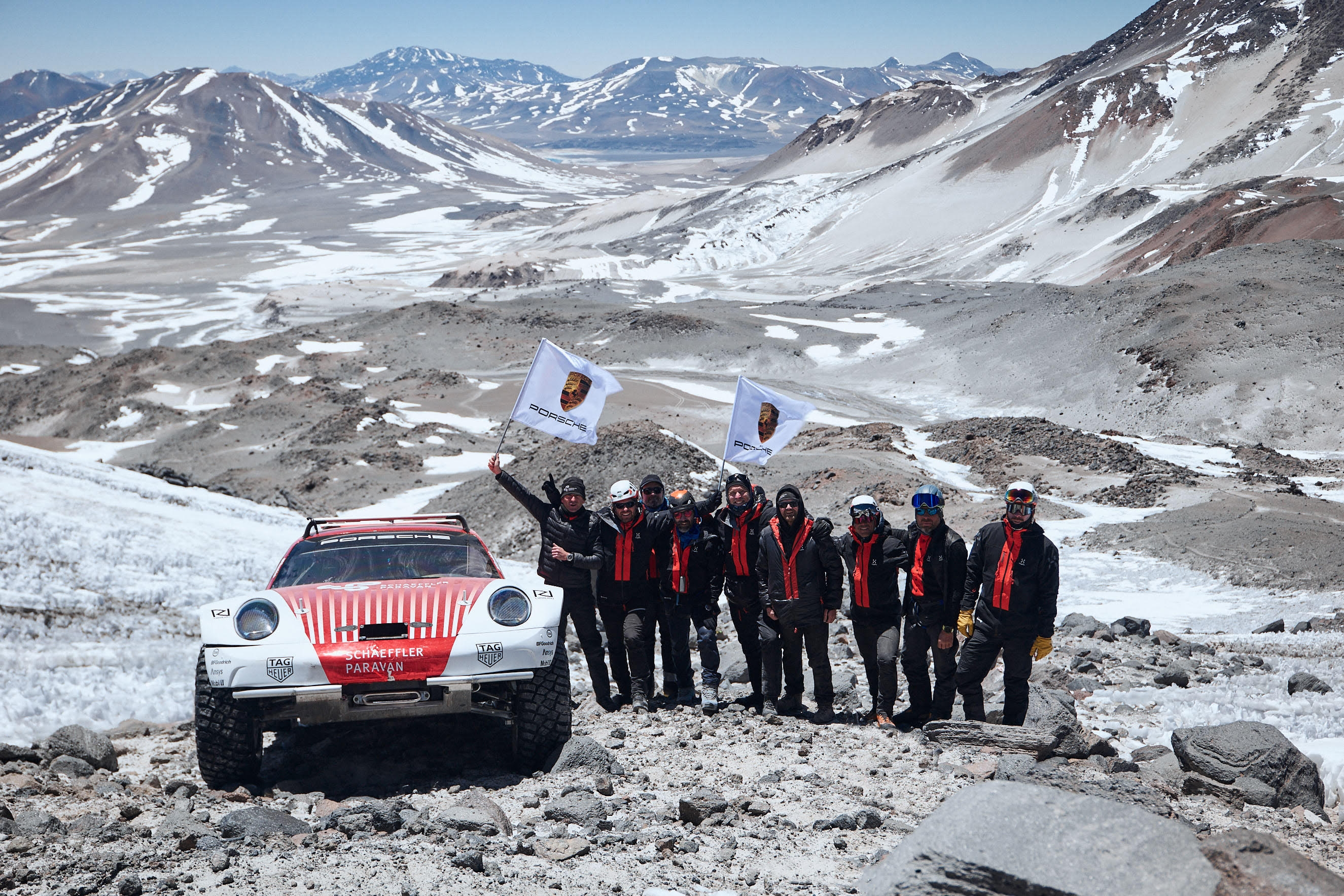Porsche Sent Two Porsches to Take on a Volcano

No one would blame you for having thoughts of race track hot laps and coastal highway cruises when the venerable “Porsche 911” namesake pops into mind, though fewer people may consider the model’s rally potential. A quick YouTube search provides an assortment of evidence that an off-road Carrera can be done– and to great effect– but it took a special excursion, led by Porsche themselves, to see two 911’s tackling the slopes of Ojos del Salado, Chile.
That would be the highest volcano in the world; a place where the air is thinner and hard to breathe, the temperatures drop far below freezing, and the roads are essentially nonexistent. Even plant life struggles to populate this beautifully desolate landscape, creating a grayscale horizon of snow-stained mountains contrasted only by the blue South American skies. Until two little, red, sports car-shaped dots appeared.
The team, led by endurance racer and adventurer Romain Dumas, tested the limits of the 911 by exploring the region’s adverse conditions, traversing elevations up to 19,708 feet. Temperatures hovered around 30 degrees celsius below freezing (-22 fahrenheit), with the air only half as rich with oxygen as it would be at sea level.

Of course, the cars used to do this weren’t your average street cars, though you’d be surprised by how much of it is stock. Each started as a 992 generation 911 Carrera 4S, equipped with the standard turbocharged flat-six engine and a seven-speed manual transmission. This powertrain delivers 443 horsepower under normal conditions. Each car received a roll cage, carbon fiber seats and harnesses for safety– again, not far off from what you’d see at your local track day.
From there, it gets more unique. Portal axles were added to increase ground clearance– up to nearly 14-inches– as were specially fitted off-road tires. The revised bodywork also increased clearance, though a winch was added for a little reassurance. Lower gear ratios were added to allow more precise use of the throttle when taking on the rough terrain. An upwardly-moved cooling system kept things safe from the sharp terrain, and the whole thing was lightweight Aramid underbody protection. In order to better guarantee success on Ojos del Salado’s inclines, a device called the “Porsche Warp-Connector ” was implemented. It forms a mechanical link between all four wheels, allowing a constant wheel load even under extreme chassis articulation. That means more traction; as do the manual, switchable differential locks.

?This was a truly memorable and special moment in a place that’s both beautiful and brutal at the same time – I guess the only machines anywhere in the world higher than us today were aircraft!” said Dumas. “For the team and the car it was about learning – and right out of the box, the car was tough and nimble. We were hard on ourselves and really put it in the deep end for its first test, yet it felt at home,”
At the end of the day, the mission appears to be a success for Porsche. And while this will probably do very little to sway more potential buyers into snagging a 911 of their own and taking it to the dirt, it is, in fact, very, very cool.






